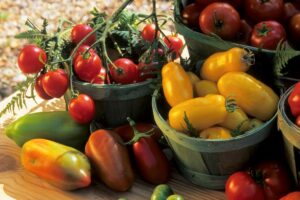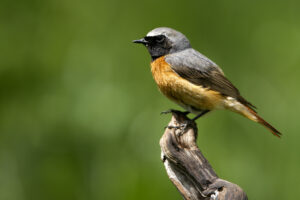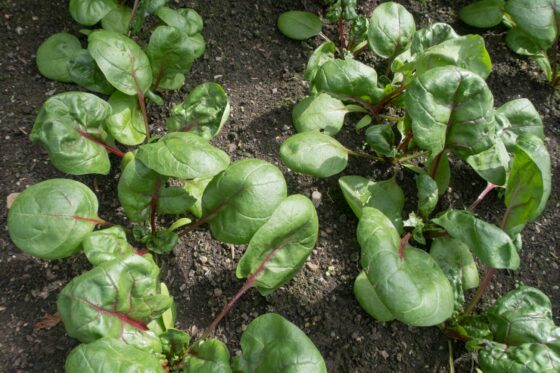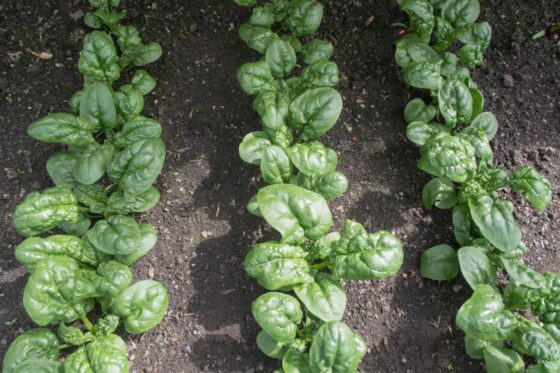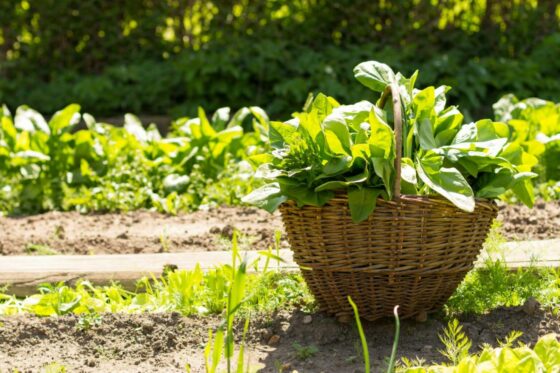Growing spinach: when, where & how?
Growing spinach is an easy and rewarding task – even for beginners. Find out how to choose the right location, when to sow spinach seeds and how to go about it.
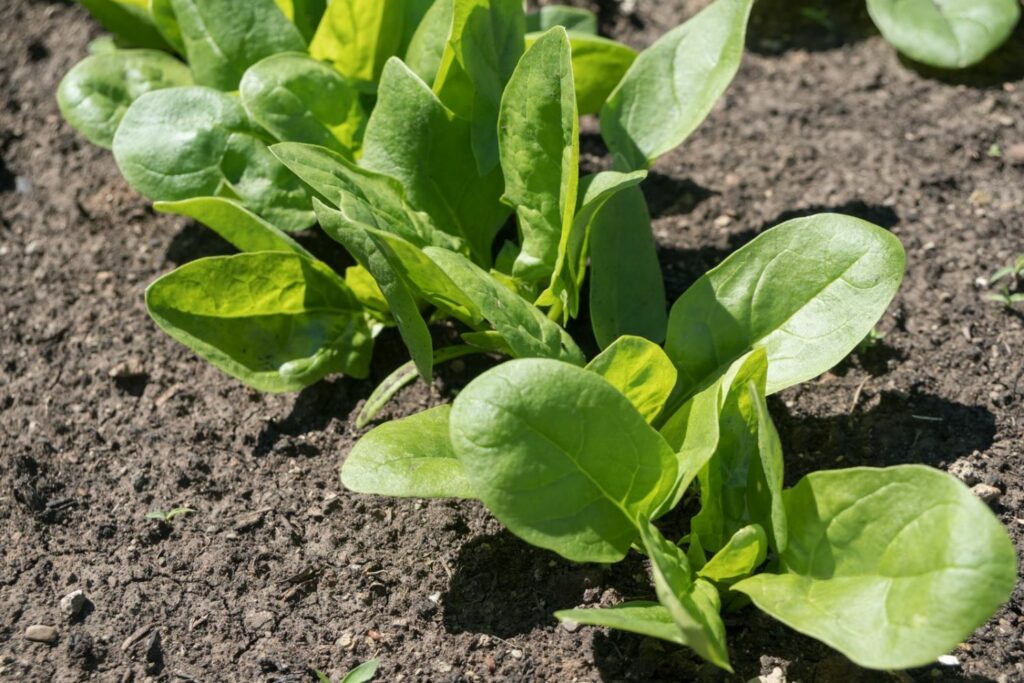
Growing spinach (Spinacia oleracea) in your garden will not only benefit your health, but the low-maintenance crop will also reward you with a bountiful harvest. Spinach is an annual leafy vegetable that belongs to the amaranth family (Amaranthaceae) and also is a common no-till crop. Read on to find out how to grow spinach at home and get all the answers to the following questions: When is the best time to plant spinach? Where is the best place to grow spinach? And how to sow spinach seeds?
Contents [hide]
When to sow spinach?
When it comes to when to sow spinach, there is more than one correct answer – spinach can be sown at various times throughout the year. Spring and autumn are the most common seasons. It is possible to grow spinach outside in all seasons if you follow a few simple rules.
The best time to plant spinach depends on the variety you intend to grow. Choosing the right variety is critical for successful cultivation. Which spinach variety to choose depends on the environmental conditions of each season. For instance, if you plan on sowing and harvesting your spinach in summer, select varieties that are particularly resistant to bolting. They do not flower as quickly when exposed to warm temperatures during the summertime, but they are often more sensitive to cold temperatures. If, on the other hand, you want to sow winter spinach, choose a frost-hardy spinach variety.

Tip: Originally, spinach was dioecious, which means it has both male and female plants. However, newly bred spinach varieties with both male and female flowers are now available. This is especially important if you want to propagate your plants and harvest spinach seeds in order to increase the likelihood of self-fertilisation and the stability of your spinach variety.
Protect spinach from cold temperatures. If you want to harvest your first spinach before summer starts, sow the spinach seeds from the end of February until April. Cover the young plants with fleece to protect them from frequent cold spells in spring. Spinach can also be grown in cold frames or hot beds.
Spinach sown in autumn overwinters in the garden bed and can be harvested early in the following year. The vegetable can generally only tolerate mild frosts, so a protective layer of leaves, brushwood, fleece or even snow is essential for winter spinach.

The table below shows the timing for sowing and harvesting.
| Sowing | Harvesting | |
| Spring spinach | End of February – Beginning of April | May – June |
| Summer spinach | April – End of June | June – August |
| Autumn spinach | July – September | September – December |
| Winter spinach | End of September – Beginning of October | April |
Tip: Because spinach is a low-growing plant that provides good ground cover, it can also be used as a living mulch. Summer spinach, for example, can provide shade for the soil beneath growing tomato plants (Solanum lycopersicum).
Where to grow spinach
Spinach thrives in sunny to semi-shady locations. However, the ideal location for the leafy vegetable depends on the variety. For example, summer spinach grows best in semi-shade, whereas winter spinach flourishes in sunny planting sites. Spinach is sensitive to compressed soil, so it is important to loosen the soil to a depth of at least 30 centimetres. Spinach prefers a humus-rich and permeable substrate with a pH of 6.5 to 7.5. A humus-rich vegetable bed can be achieved through careful humus management and the regular use of plant-based fertilisers.
To grow spinach in a greenhouse, it is critical to ensure proper ventilation. Otherwise, your spinach plants are more likely to become infected with downy mildew (Peronosporales). While growing spinach in a greenhouse can result in an earlier harvest, particularly in the winter and spring, it is less suitable for spinach in the summer. Spinach cannot tolerate hot temperatures and flowers quickly.

Choosing a planting site:
- Sunny to semi-shady location
- Loose, well-draining soil
- Soil rich in humus and nutrients
- Ideal pH value: 6.5 – 7.5
Growing spinach in raised beds
Growing spinach in raised garden beds can be very advantageous because it is easier to harvest and care for. Plus, slug damage is less likely. When sowing spinach in a raised bed, make sure to choose bolt-resistant varieties because raised beds tend to be drier and sunnier than garden beds, promoting early flowering.

Consider sowing spinach a year after filling your raised bed. Spinach is a medium feeder and copes well with the nutrients that were left in the soil after the first year by the strong feeders.
Growing spinach in pots
You can grow spinach even if you do not have a suitable garden bed. The versatile leafy vegetable even thrives in confined conditions – spinach grows happily on balconies. It does not matter whether your balcony is sunny or partially shaded, but keep in mind to not keep them in fully shaded areas. It is important to choose a container with a volume of at least three litres and drainage holes as waterlogging can kill your spinach.

Tip: Spinach needs a good and suitable substrate to flourish in a container. Our Plantura Organic Tomato & Vegetable Compost is perfect for your spinach: It is permeable, ensures a good water supply and has an ideal pH value of over 6.5.
Growing your own spinach
Spinach is a fast-growing vegetable, so it is perfect for impatient gardeners. On top of that, spinach is a great choice for a catch crop or gap filler.
Sowing spinach
Spinach is sown directly into the ground. It is sown in rows to keep weeds at bay. This way it is much easier to carry out important maintenance tasks like hoeing between rows. Before sowing, loosen the soil with a garden fork and remove any weeds. To ensure that your spinach is sown in optimal conditions, prepare your soil before sowing your seeds. Spinach requires loose, well-drained soil with a good water supply. Soil too heavy? Mix in our Plantura Organic Tomato & Vegetable Compost or sand to loosen. Soil too light and sandy? Mix in a high-quality organic potting soil to improve.
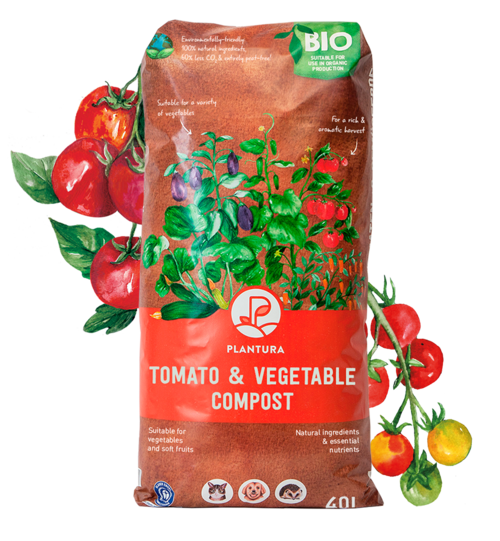
- Perfect for tomatoes & other vegetables such as chillies, courgettes & more
- For strong & healthy plant growth as well as an abundant vegetable harvest
- Peat-free & organic soil: CO2-saving composition
To provide the plant with sufficient nutrients right from the start, we recommend using a basic fertiliser before sowing your spinach. To do this, work our Plantura Tomato Food or compost into your soil. If the soil is too acidic for spinach to grow, the pH can be adjusted with lime or by using alternative fertilisers.
Sow the spinach seeds 2 to 3 centimetres deep and relatively close together, spaced about 3 to 4 centimetres apart. Space the rows 20 to 30 centimetres apart. Pat down the soil firmly and water carefully. The optimal germination temperature for spinach is 10 to 20 °C and you can expect the first sprouts to appear after one to two weeks. Although spinach will also sprout and grow at lower temperatures, it will take longer. After about three to four weeks, when the first plants touch each other, thin out to 8 to 12 centimetres apart.
Tip: Let your spinach grow a little larger and thin out the rows by harvesting baby leaf spinach!
Cover your spinach with fleece if you sow spinach seeds in spring or autumn to prevent the plants from freezing. If you sow your spinach in summer, make sure that your soil does not dry out. Water your plants at least once a day. You can harvest spinach after just six to eight weeks.
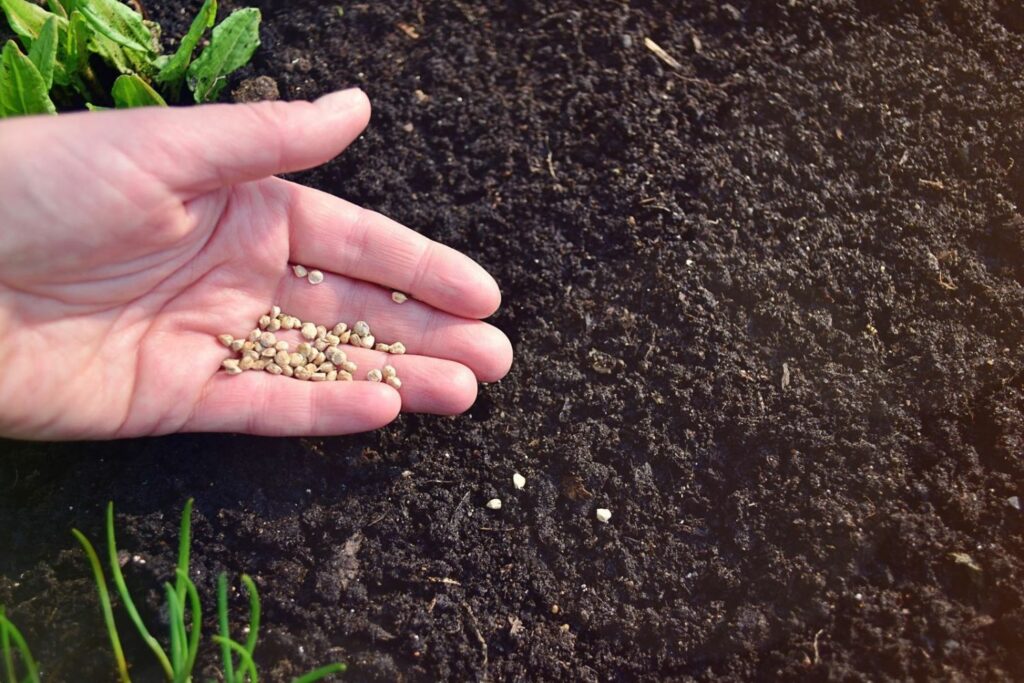
Tip: Reseed your spinach regularly to harvest continuously!
Summary: Sowing spinach
- Prepare soil to ensure loose, humus-rich soil
- Loosen heavy, loamy soil with Plantura Organic Tomato & Vegetable Compost or sand
- Enrich the soil with nutrients
- Adjust your pH-value by liming or fertilising the soil if necessary
- Row spacing: 20 – 30 cm
- Seed spacing: 3 – 4 cm
- Sowing depth: 2 – 3 cm
- Ideal germination temperature: 10 – 20 °C
- Cover your spinach with fleece if there is a risk of frost
- After 3 – 4 weeks, thin out to 8 – 12 cm
- Harvest after 6 – 8 weeks

Transplanting spinach
You can transplant spinach seedlings easily after either growing them yourself or buying pre-grown plants. The best time to do this depends on your variety, but spinach is typically planted from March to October. Prepare the soil and space the spinach plants 10 cm apart in a row, leaving at least 20 cm between rows. Water regularly after planting.
Best spinach companion plants
Spinach is a great companion plant for many plants in mixed cropping. The plants’ roots release saponins into the soil that stimulate plant growth.
Spinach companion plants: Strawberries (Fragaria), radishes (Raphanus sativus var. sativus), kohlrabi (Brassica oleracea var. gongylodes), leek (Allium porrum) and tomatoes (Solanum lycopersicum).
However, do not grow Spinach together with plants of the same family, such as beetroot (Beta vulgaris subsp. vulgaris var. conditiva) and chard (Beta vulgaris subsp. vulgaris).

If the thought of sowing spinach several times a year and choosing the right variety for each season seems daunting, give Good King Henry (Chenopodium bonus-henricus) a go. This herb, also known as wild spinach, tastes similar to spinach but is a perennial, so you can enjoy it for a long time.
